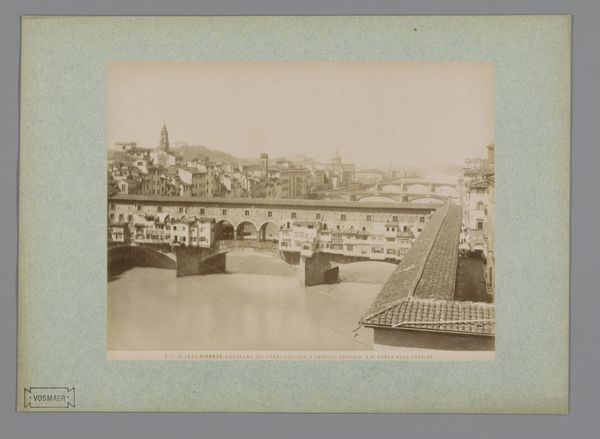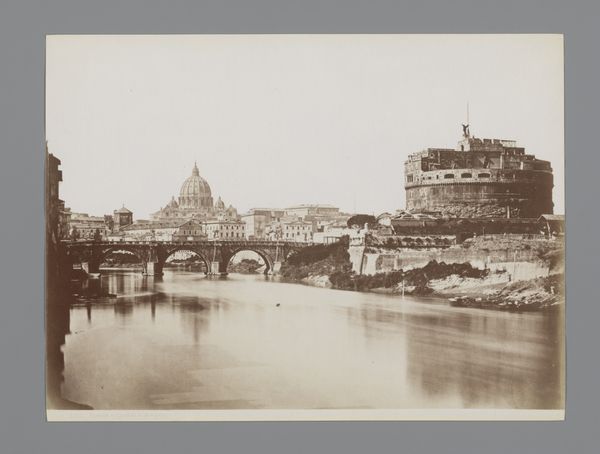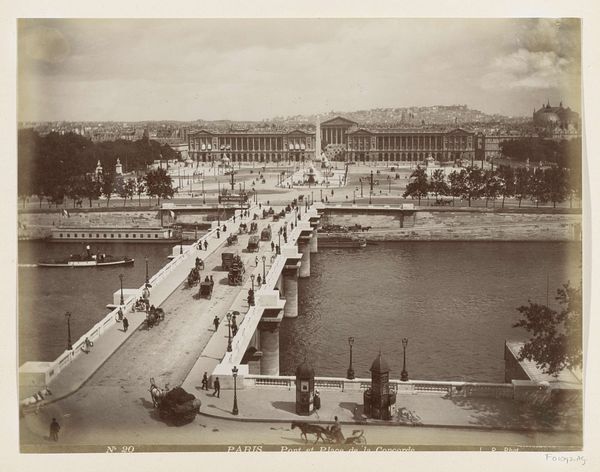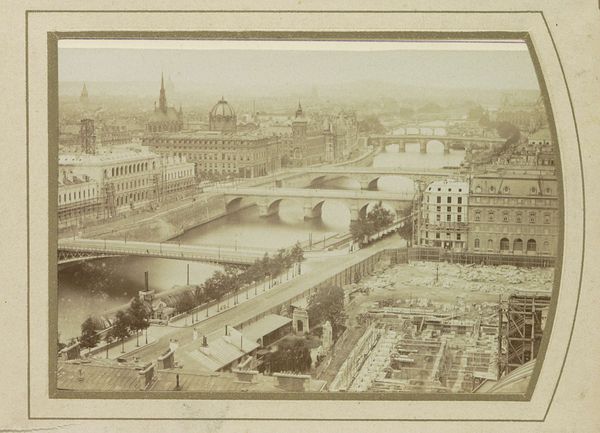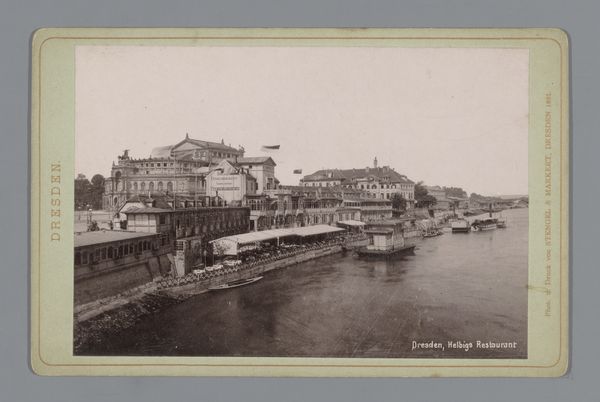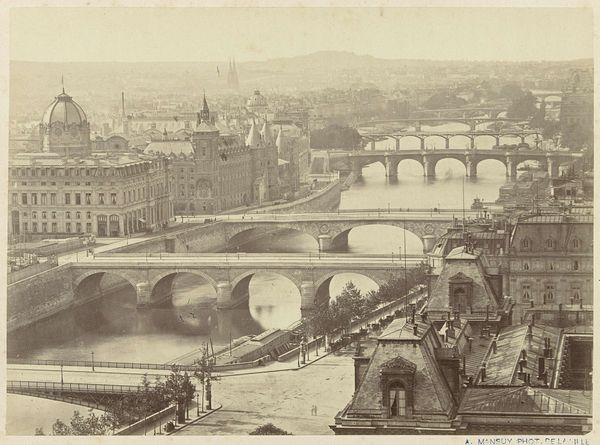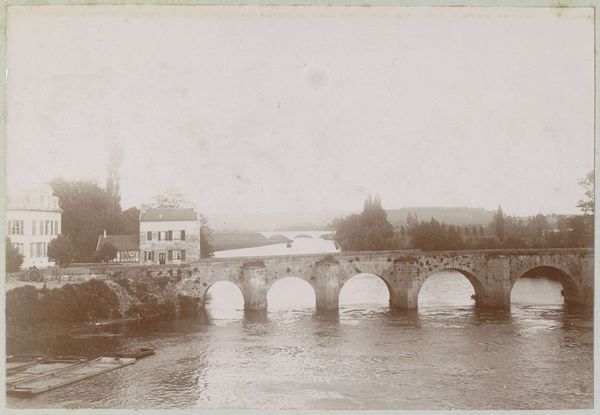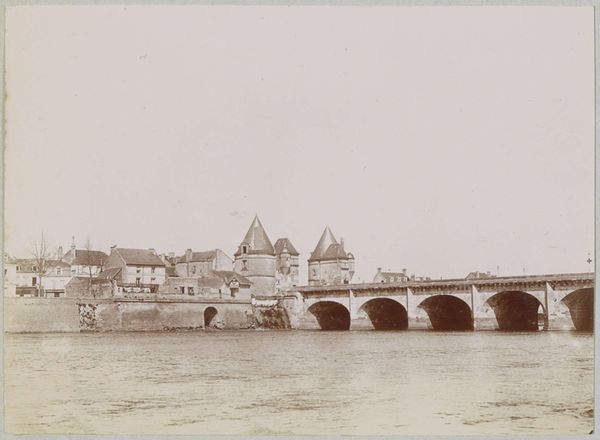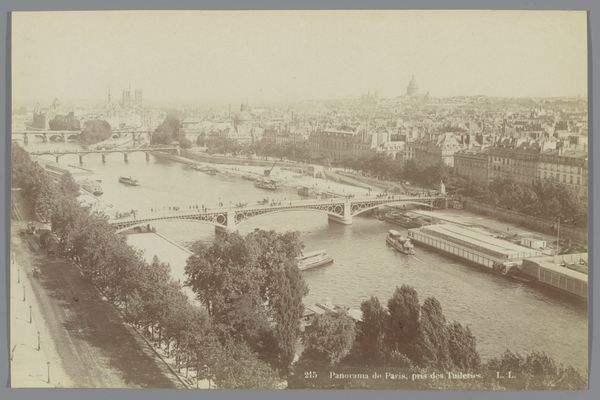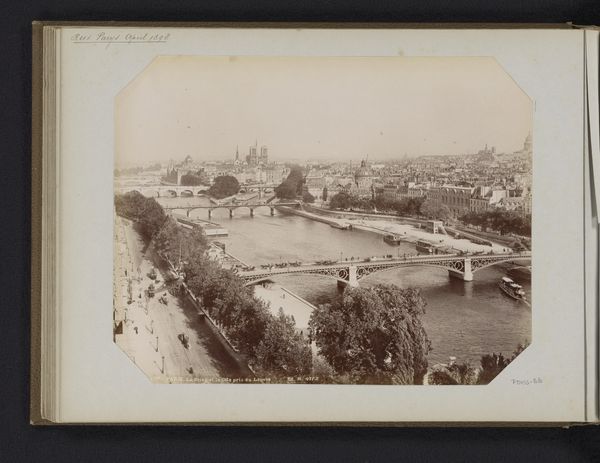
print, photography
# print
#
landscape
#
photography
#
cityscape
Dimensions: height 108 mm, width 166 mm
Copyright: Rijks Museum: Open Domain
Curator: A rather somber cityscape, wouldn’t you agree? A touch bleak. Editor: I see it quite differently. It’s evocative, a document capturing the grandeur of Dresden in 1889, specifically focused on the Albert Bridge. Curator: What resonates is this overwhelming grayness—the palette is constrained but seems right. Almost like a prophecy, wouldn't you say? Does the camera reveal something beneath, something waiting in the culture and place? Editor: The photographic print, credited to Stengel & Markert, reveals more than just a prophecy. It unveils the relationship between urban development and political power. Note the positioning of the barracks alongside the Albert Bridge. Consider the role this photograph plays in constructing Dresden’s image during a period of rapid industrial and military expansion. Curator: And the bridge as a symbolic crossing, linking the known to the unknown. We see here a cultural object loaded with the promise, or perhaps the threat, of modernity—it speaks, it connects, it remembers a whole culture on the cusp of immense transformations. Look at how it dominates! The eye can find no respite from it. It’s oppressive, almost as though civilization were bearing down on the landscape. Editor: But it also showcases progress! Here, infrastructure represents connection and order. Think about how the rise of photography shaped civic identity at the time. Prints like this were not just artistic records but also promotional tools, disseminating a particular narrative of urban strength and architectural innovation. It emphasizes Dresden's industrial growth and political aspirations. It's a visualization of control and authority through landscape. Curator: Indeed. In terms of cultural memory, it evokes feelings of change. You can almost feel a collective unconscious adapting, shifting as the image travels across decades, even to our time. That visual imprint must have marked so many people. Editor: Exactly! As a piece of historical evidence, this print enables us to reconstruct an understanding of how the period perceived itself. These cityscapes actively fostered a sense of identity and belonging for locals while marketing a vision to outsiders. Curator: A chillingly informative image that speaks through multiple temporal layers! Thank you. Editor: And thank you. The intersection of iconography and socio-political contexts always provides invaluable insights!
Comments
No comments
Be the first to comment and join the conversation on the ultimate creative platform.
